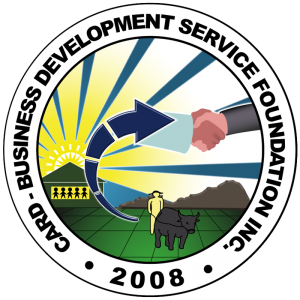CARD of hope: Financial inclusion at its best
I WAS 12 years old when CARD started as a foundation, providing loans to landless coconut workers. I witnessed its growth from its humble office—a classroom lent by my grandfather to my father at the back of the San Pablo City public market—to its more than 2,000 offices spread across the Philippines and other Southeast Asian countries. Throughout its 31 years of existence, it has remained faithful to its mission of eradicating poverty. Its visionary leadership, committed staff and resilient clients all contributed to its present status: CARD is now composed of 21 mutually reinforcing institutions, a multi-billion-peso social development organization serving more than 4.5 million clients and manned by staff of more than 13,000.
During its initial years, CARD implemented a group liability model patterned after the Grameen Bank, with some modifications. It was a good foundation for promoting solidarity but had the downside of pushing away good payers, even as they were compelled to pay the amortizations of defaulters. ASA Bangladesh’s individual liability became the new innovation that CARD adopted in 2001 that led to its exponential growth.
In order to sustain massive expansion, the search for commercial funding became the next challenge. Commercial lenders were sceptical of micro finance methodology despite its relevance in financial inclusion, and MFIs were considered risky. CARD got its break when the international nonprofit Grameen foundation guaranteed CARD’s loan with a commercial bank. Also, the late Washington Sycip, my father’s mentor and adviser to CARD, opened many windows of opportunity through his endorsement to local and foreign banks and individuals. It is now apparent that it is a missed opportunity for large banks if they do not lend on wholesale basis to high-performing MFIs. Today, several instruments are being offered in the market like bonds, receivables assignments and clean loans, among others. In other countries like Mexico and India, MFIs offer IPOs but it is not a path that CARD wants to take – CARD is happy to be owned by its Nanay borrowers instead of well-off investors, in accordance with its vision of a bank owned and managed by the poor. In addition, the regulatory environment is enabling and favorable to microfinance, and CARD takes pride in the fact that its experience in poverty lending served as a basis for many of the policies that BSP crafted to make the industry vibrant.
I would often hear in conferences that there are millions of Filipino poor who are underserved or unbanked. On the other hand, I also hear account officers claiming that the industry is so saturated that competition is steep. These conflicting observations stem from the fact that MFIs are concentrated in areas where the population is dense, as this is key to viability (easy to access, easy to penetrate).
However, the market is actually not saturated; underserved clients live in remote villages, far-flung islands and mountainous areas that are indeed hard to reach. I was able to validate this four years ago when we were distributing solar lamps for off-grid communities in Mindanao. There may be micro-finance presence in every barangay but not in every sitio. Some MFIs, including CARD, hurdle this obstacle by cross-subsidizing operations in remote/hard-to-reach locations with its profitable branches. I have high hopes that as we move into the future and as technology becomes available and affordable, mobile banking and inclusion of sari-sari stores as agents/extensions of micro banking offerings will make extreme poverty in these areas just a memory.
As a micro-finance practitioner, I believe we can help a person move up the ladder of poverty through increased income if we provide business development which is a process of providing complimentary non-financial services to micro entrepreneurs, like marketing, product development, and value chain facilitation, among others. I would say that this is a more complex service than just selecting a financial product appropriate to your client. How do you help her sell her products? CARD is doing this through its subsidiary Mga Likha Ni Inay (MNLI), a distribution company assisting clients in product development and market linkaging. Currently, MNLI partners with commercial channels like SM, Robinson’s, LCC, Kultura, Red Logo, Anthill, Sabanana, Unilever Water Project, Hybrid Solutions, R2R, Alter Trade, Hapinoy and Gem Foods Export to sell Nanays’ products. Undoubtedly, it is a difficult ball game to scale and sustain even as every micro enterprise has its own complexities and requires different expertise. Nonetheless, the smile on every Nanay’s face as they receive their hard-earned money is so worth the effort and a true mark of inclusive growth.
manilatimes.net
https://www.manilatimes.net/card-hope-financial-inclusion-best/368475/
